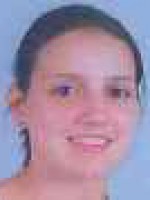abstract
In the context of bone regeneration, it is important to have platforms that with appropriate stimuli can support the attachment and direct the growth, proliferation and differentiation of cells. In the orthopedic field, metals and alloys are still the dominant materials used as implants, though their bioinert character leads to failure or to the need for multiple revision procedures. To respond to this situation here we exploit an alternative strategy for bone implants or repairs, based on charge mediating signals for bone regeneration, envisaged as a type of biological micro-electromechanical system (BioMEM). This strategy includes coating metallic 316L-type stainless steel substrates with ferroelectric LiTaO3 layers functionalized via electrical charging or UV-light irradiation. We show that the formation of surface calcium phosphates and protein adsorption are considerably enhanced for 316L-type stainless steel functionalized ferroelectric coatings. Our findings go beyond the current knowledge and demonstrate that the protein conformation is sensitive to the type of charge functionalization of the ferroelectric coatings. Our approach can be viewed as a set of guidelines for the development of electrically functionalized platforms that can stimulate tissue regeneration, promoting direct integration of the implant in the host tissue and hence contributing ultimately to reducing implant failure.
keywords
BOVINE SERUM-ALBUMIN; LITHIUM-NIOBATE; SURFACE-CHARGE; ELECTRICAL-STIMULATION; CELL; HYDROXYAPATITE; BIOMATERIALS; POLARIZATION; WETTABILITY; GROWTH
subject category
Materials Science
authors
Zlotnik, S; Maltez-da Costa, M; Barroca, N; Hortiguela, MJ; Singh, MK; Fernandes, MHV; Vilarinho, PM
our authors
Groups
G2 - Photonic, Electronic and Magnetic Materials
G5 - Biomimetic, Biological and Living Materials
acknowledgements
This work was funded by FEDER funds via Programa Operacional Factores de Competitividade - COMPETE and National funds via FCT (Fundacao para a Ciencia e Tecnologia) within the Project CICECO-FCOMP-01-0124-FEDER-037271 (FCT PEst-C/CTM/LA0011/2013). Sebastian Zlotnik and Manoj Kumar Singh acknowledge FCT for financial support, SFRH/BD/67023/2009 and 2013 FCT Investigator Programme, respectively. The authors are also grateful to Dr Javier Perez de la Cruz (University of Porto) for his help with Raman analysis, and Dr Gonzalo Otero-Irurueta (University of Aveiro) for assistance with XPS analysis.






